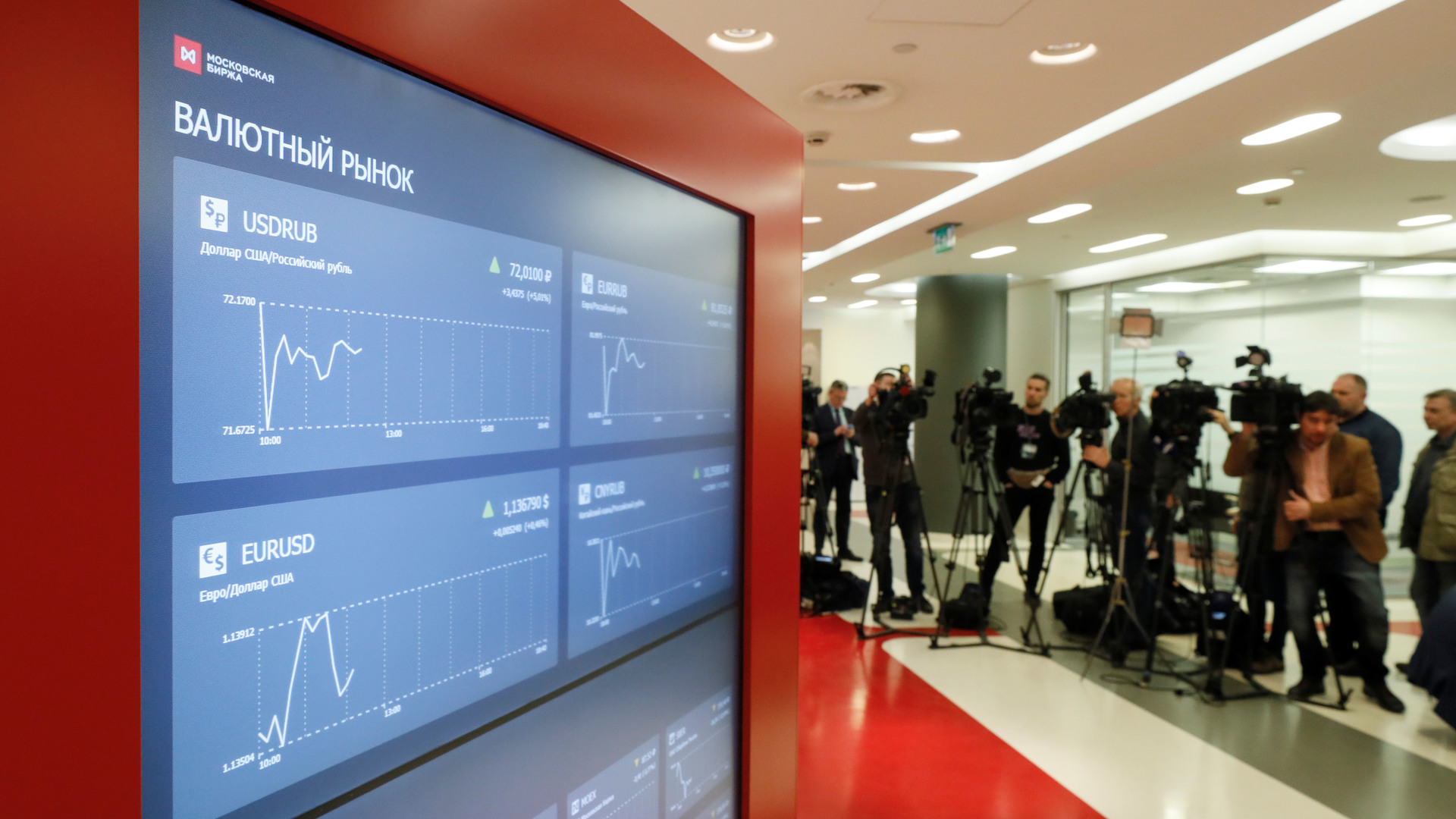On Monday, September 21, the Russian currency shows weakening on the Moscow Exchange.
During the trading, the euro rate grew by almost 0.8% and for the first time since February 2016 reached 90.4 rubles.
At the same time, the dollar rate rose by 1% - to the level of 76.55 rubles.
The last time a similar indicator was observed on September 8.
The official exchange rate of the Central Bank on September 22 was set at 76.04 rubles per dollar and 90.01 rubles per euro.
According to analysts, a sharp decline in oil prices put pressure on the ruble.
At trading on Monday, Brent crude on the ICE exchange in London fell in price by more than 2.5% - to $ 42 per barrel.
“The Russian market is always sensitive to any changes in the situation in the oil and gas industry.
Last week, OPEC and the US Department of Energy presented updated forecasts, in which they report a deterioration in their estimates at the end of this year.
Thus, the demand for oil will recover much more slowly than previously expected, ”Ksenia Lapshina, an analyst at QBF Investment Company, told RT.
According to her, the sharp rise in the exchange rate of the dollar and euro against the ruble is also associated with geopolitical factors.
In particular, investors are still alarmed by the situation in Belarus, as well as the possibility of increasing sanctions pressure.
“Western countries are ordering Moscow to intervene in political events in Belarus.
At the same time, more and more details about the incident with Alexei Navalny appear, which increases the likelihood of new sanctions against Russia.
Possible restrictions against the Nord Stream 2 project are already openly discussed in the United States, Great Britain and the Eurozone.
However, it is necessary, at least, to wait for the results of the investigation, so so far the sanctions are only in words, ”added Lapshina.
Reuters
© Anton Vaganov
Note that the government today does not see the risks of blocking Nord Stream 2.
According to the head of the Russian Ministry of Energy Alexander Novak, the gas pipeline will be completed, despite all the difficulties arising around the project.
“Today, more than 100 companies from 12 countries are participating in the Nord Stream 2 project.
Highly completed project.
And, of course, this is the project that will create infrastructure for many decades to come.
And it will be possible to guarantee competitive conditions for the supply of energy resources to Europe.
Therefore, I am sure that this project is needed and will be fully implemented, "Novak said on September 17 on the air of the Russia 1 TV channel.
According to experts, one of the reasons for the weakening of the national currency was the correction in the global stock market.
Against the background of an increase in the incidence of coronavirus in a number of countries, world investors are losing interest in emerging market currencies, including the ruble.
“We see a deterioration in the situation in world markets caused by the second wave of the pandemic, as well as the scandal around the largest European bank HSBC, whose quotes have fallen to a minimum in 25 years.
This situation has only accelerated the flight of investors from risky assets, especially from emerging markets, "Dmitry Babin, an expert on the BCS Broker stock market, explained in an interview with RT.
In addition, tensions in the foreign exchange market are gradually increasing ahead of the US presidential elections, which are scheduled for November 3.
Ilya Zaporozhsky, an expert at the Academy of Finance and Investment Management, expressed this point of view in an interview with RT.
“The possible victory of Biden in the US elections as well may carry risks for both Russia and the American economy, especially for the IT sector and large US companies.
Biden does not have the same leverage as Trump, with his influence on the US Federal Reserve and market sentiment.
Also, Democrats are going to significantly increase taxes on corporations and citizens with high incomes under the auspices of the fight against class inequality.
This will cause an outflow of capital from the market, and the collapse on the US sites will provoke a chain reaction in the financial markets of Russia and Asia, ”Zaporozhsky explained.
Support factors
According to Dmitry Babin, the ruble is supported by the relative stability of the Russian debt market.
Over the summer, amid an outflow of foreign investment, the Russian government bond index (RGBI) fell by almost 2%.
Meanwhile, as the expert noted, since the beginning of autumn, the indicator managed to stabilize and refrain from a more serious fall.
“Although the RGBI government bond index has been declining for the fourth session in a row, having updated its weekly low, the decline remains rather restrained.
This indicates the absence of extreme pessimism in this segment, ”Babin explained.
Reuters
© Shamil Zhumatov
According to experts, the weakening of the ruble is still holding back the actions of the Bank of Russia.
Recall that in order to stabilize the exchange rate from March 10, the regulator began proactive sale of foreign currency in the domestic market.
Thus, the Central Bank artificially increases the demand for rubles.
In total, during this time, the volume of currency sales amounted to about 1.19 trillion rubles.
According to Ksenia Lapshina, the tax period is partly in favor of the Russian currency.
At this time, exporting companies traditionally sell foreign currency and buy rubles to pay taxes.
“According to our forecast, by the end of September the euro rate will remain in the range of 88-90 rubles, and the dollar rate - in the range of 75-77 rubles. In the future, with an increase in sanctions risks, we do not exclude that the dollar exchange rate may reach 80 rubles, but the likelihood of this at the moment is small, ”concluded Ksenia Lapshina.

